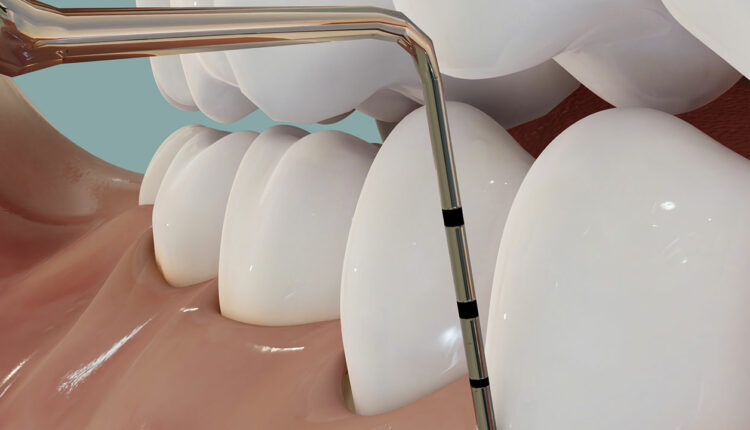 IkonosMedia / iStock / Getty Images Plus
IkonosMedia / iStock / Getty Images Plus
Classification of Endodontic-Periodontal Lesions
A close-up look at primary endodontic lesions and primary endodontic lesions with secondary periodontal involvement.
In 1972, Simon et al1 classified endodontic-periodontal lesions as: 1) primary endodontic lesions, 2) primary endodontic lesions with secondary periodontal involvement, 3) primary periodontal lesions, 4) primary periodontal lesions with secondary endodontic involvement, and 5) true combined lesions.
This edition of Perio Update takes a look at primary endodontic lesions and primary endodontic lesions with secondary periodontal involvement.
Primary Endodontic Lesion
The etiology of a primary endodontic lesion is a necrotic and infected pulp. Although primary endodontic lesions may mimic the appearance of vertical root fractures, one of the signs of a vertical root fracture is that the tooth will have been previously endodontically treated. If the tooth has not been previously endodontically treated, the clinician should perform pulp sensibility testing. A deep periodontal pocket combined with a diagnosis of pulpal necrosis would indicate a primary endodontic lesion.2 In this case, root canal treatment should be completed, and healing should be expected to occur.
However, the presence of a primary endodontic lesion may also arise from a previously treated tooth with persistent endodontic disease. In this situation, the potential of a vertical root fracture should be considered, and the patient should be properly informed of all risks, benefits, and alternative treatments prior to the initiation of treatment.
Primary Endodontic Lesion With Secondary Periodontal Involvement
As the name implies, the etiology of a primary endodontic lesion with secondary periodontal involvement is endodontic; however, the sulcular sinus tract has been patent for sufficient time for biofilm and calculus to form on the root surface. For these types of lesions, root canal treatment should be performed first, and the tooth should be reevaluated in 3 to 6 months for healing. If periodontal healing has not occurred, periodontal treatment should be performed. The treatment success of these lesions relies on the success of the periodontal therapy.1
References
- Simon JHS, Glick DH, Frank AL. The relationship of endodontic-periodontic lesions. J Periodontol. 1972;43:202–208.
- Herrera D, Retamal-Valdes B, Alonso B, Feres M. Acute periodontal lesions (periodontal abscesses and necrotizing periodontal diseases) and endo-periodontal lesions. J Clin Periodontol. 2018;45(Suppl 20):S78–S94.
This information originally appeared in Dunlap CA, Lundergan WP, Dunlap BC. Detecting endodontic-periodontal lesions. Dimensions of Dental Hygiene. 2022;20(10)42–45.

